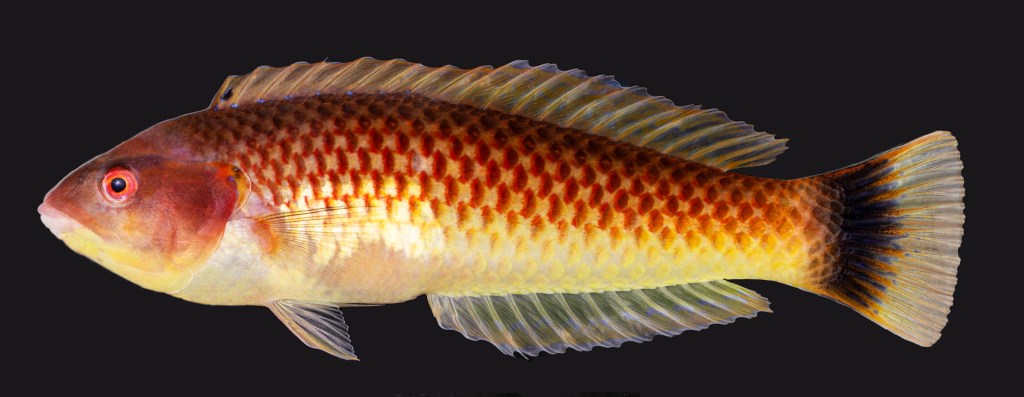A tiny, orange-vermillion colored fish has been named a new species after a team of divers from Southern California and Mexico found the wrasse in deep water among volcanoes and rugged rocks near the remote Mexican Revillagigedos Islands in the Eastern Pacific Ocean.
The Halichoeres sanchezi, or more commonly the tailspot wrasse, and its discovery in the Marine Protected Area were announced recently in a scientific journal by Benjamin Victor, an Irvine-based marine scientist who has helped name and discover more than 80 new species, 13 of those in the wrasse families.
Wrasse are a vibrantly colorful group of fish that includes 600 species; many of the tailspot’s relatives are common in home aquariums, Victor said.
Declaring a new species isn’t an easy process. It required at least six months of DNA research, and then it took another six months for Victor to write up the discovery in the journal. The announcement of a new species isn’t publicly revealed until it’s published in a science journal.
Through his research, Victor discovered that the tailspot wrasse is presently only known to be found near those islands, though that could change if El Nino worsens.
The discovery of the tailspot is unique in that most new tropical fish species are typically found preserved in jars in museums and then “described” as new, Victor said.
“To actually have the first one of a species collected live,” he said, “it’s very unusual.”
The eight specimens of the new species collected by the team range from an inch to nearly six inches in length.
The females are mostly white with reddish horizontal stripes along their top half and black patches on their dorsal fin, behind their gills, and near their tail fin.
“This species is unusual among wrasse, where the male is almost always the more colorful one,” Victor said. “In this species, the female is more colorful.”
The first photos of the unknown fish were taken in 2013 during a Reef Environmental…
Read the full article here







